The IWC Ingenieur has a varied past that spans multiple generations and identities, having reinvented itself most recently in 2023 with a hard reset back to its Gerald Genta era design language. It was a move IWC enthusiasts had been asking for since CEO Chris Grainger took the reins from Georges Kern back in 2017. But getting it right would be no small task, and even now the Schaffhausen based watchmaker can’t quite seem to get them into the market fast enough. The new reference 3289 Ingenieur has a lot going for it, and if you ask me, hits all the notes that it needs to hit in order to be a long term success for the brand. But it does not represent the first time a modern take on the original Genta SL has been attempted.
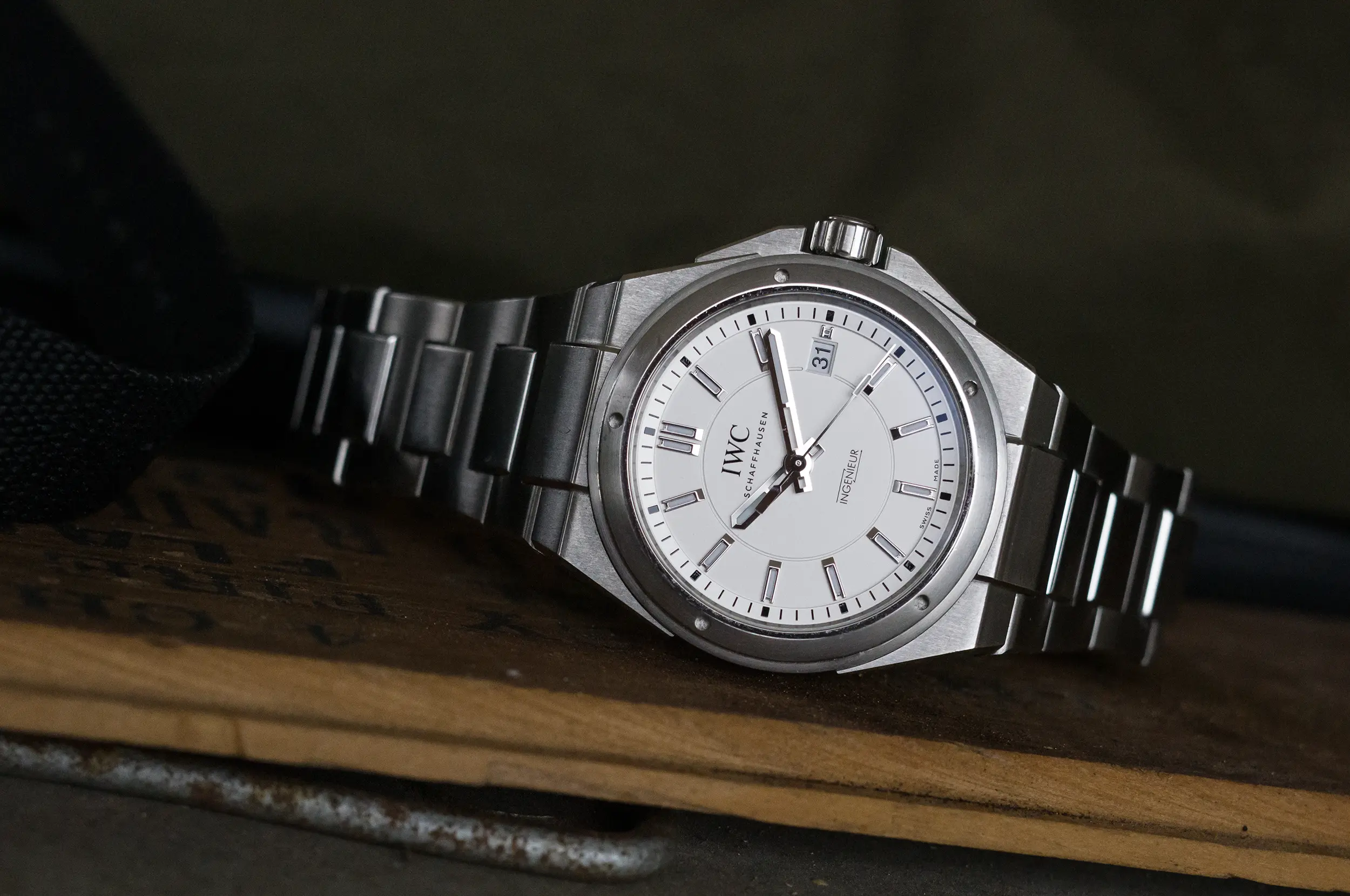
Dial the clock back to 2013, a handful of years before the integrated bracelet sport watch trend fully took hold, and we find IWC releasing an Ingenieur truly ahead of its time. The reference 3239 is a steel sport watch with integrated bracelet which carries clear SL DNA in its design, but feels thoroughly modern in execution. The 40mm case measures a mere 10mm in thickness, and the block bracelet makes for a perfect pairing on the wrist. Use of an ETA movement inside meant the price could be kept in check, and placed the watch firmly in the realm of ‘tool’ meant to be used, rather than an horological showcase. It was approachable, usable, and looked every bit the part. In a way, the 3239 arrived a solid 5 years too early for its own good.
Rather than serving as the future of the collection, the Ingenieur would go on to embrace its roots in a very different way. Before the Genta designed SL Ingenieur, the anti-magnetic engineer’s tool watch was defined by a round case and somewhat conservative, straightforward dial. The initial reference 666A first appeared in 1955, and would serve as the base for the budding genre for over 20 years, with the SL appearing in 1976. In 2017, IWC revisited this early design language with a new generation of the Ingenieur, and the time and date reference 3570 (though complicated references were introduced as well). This change in direction came just moments before the integrated bracelet sport watch craze would fully materialize, and it wouldn’t be until 2023 that IWC would be able to reposition the collection to take advantage. Whether that will prove too late or not is yet to be determined, but I’m of the mind that a good watch transcends any era-specific design trends.
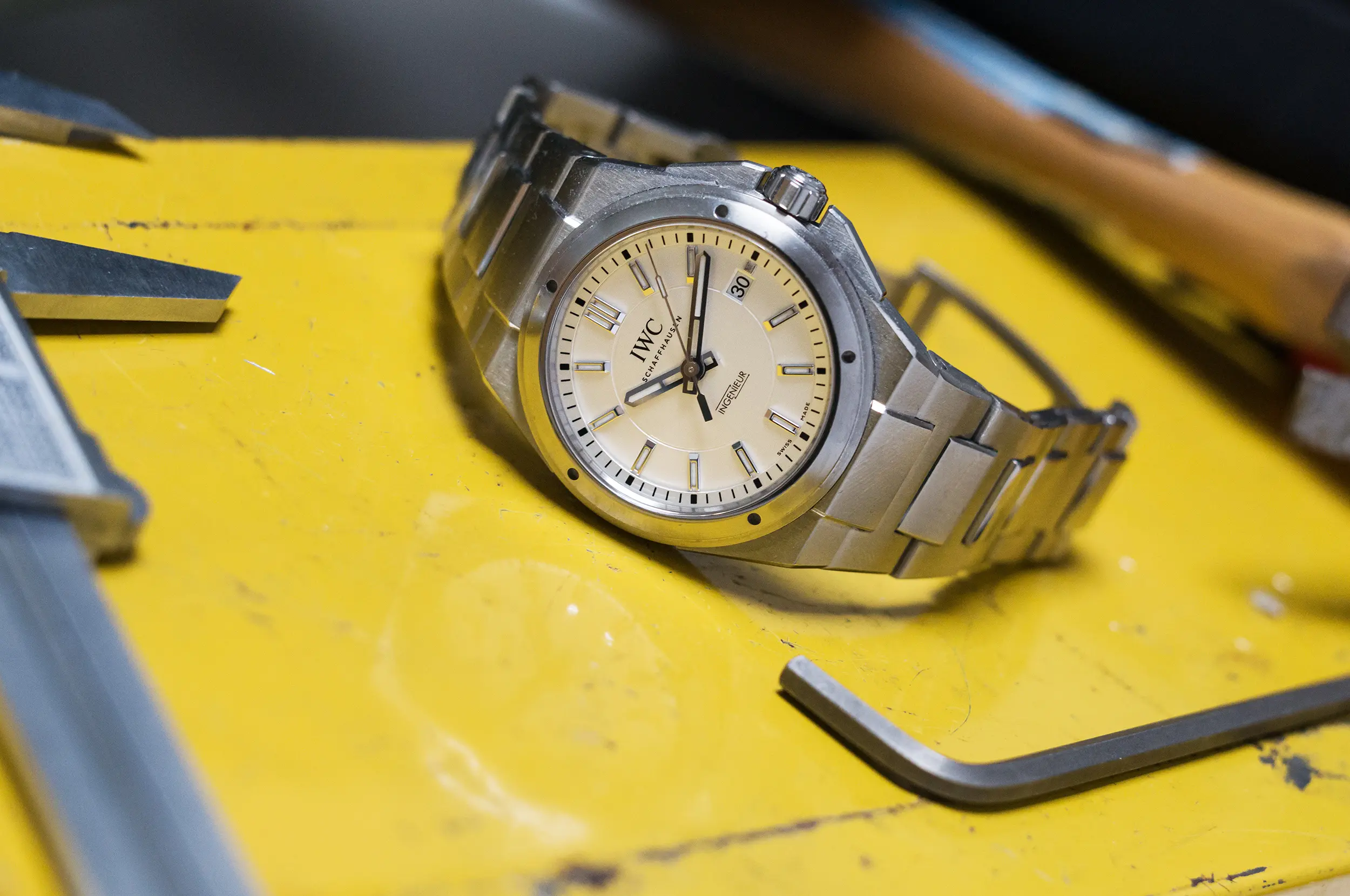
The 3239 is a different breed altogether, and serves as connective tissue to the IWC’s days creating overt tool watches without much in the way of luxurious undertones. Three dial colors were originally offered upon its release in 2013, white, black, and white with gilt furniture. A fourth blue dial was later released for the Laureus Sport for Good program, of which IWC is a global partner. As exciting as this release was in 2013, it also happened to come at the lead into the ‘in-house’ trend, somewhat limiting the mid term relevancy of the ETA equipped 3239, unfortunately.
Looking beyond the context surrounding the Ingenieur 3239, you’ll find a compelling sport watch that deserves recognition. There are also lessons learned here, which have been addressed in the newest reference. The case transition to the bracelet is blocky, but somehow manages to form itself neatly on the wrist. It lacks the silky feel of the newest reference, and a little more taper would work wonders here, but it comes together better than it has any business doing. This fact is largely owed to the trim 10mm case thickness, were it any thicker the lovely balance that the 3239 achieves would be seriously compromised.
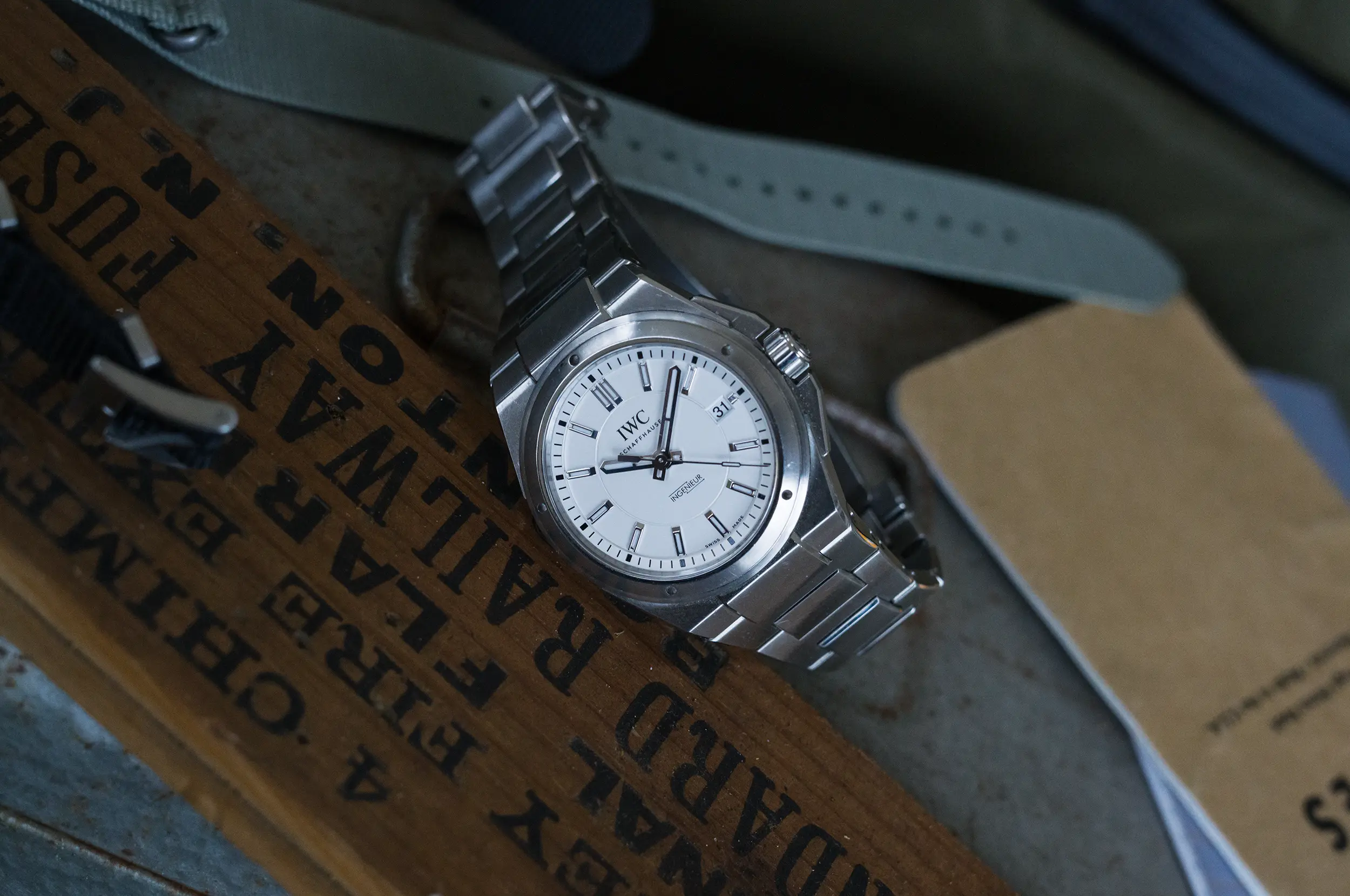
The bracelet and case make a statement here, with well defined lines and large, blocky surfaces. The H-link bracelet gets a single angled taper near the case, leading to a deployant clasp underneath. Links are removed by depressing a button at the back of the link, which releases a rod holding the links together. It’s an old-school way of keeping things together and it works remarkably well. It’s a bit blunt, but quite satisfying in practice, and I’m happy to see it remain on the newest references of the Ingenieur.
A thin polished chamfer frames the case and bracelet, as well as the square center links within the bracelet. It’s a small surface area, and minor scuffs dull the effect well enough that this watch reads as fully brushed. There is a single section of the watch case that’s fully polished along the 9 o’clock side of the case, which is a bit jarring when taken in consideration of the rest of the watch, but it’s not something that comes into view often. Overall, the shape and texture of the 3239 provides a huge amount of the personality of the watch. It’s not as graceful as the new 3289 reference, but it’s a confident design that, thanks to the different dial texture, flies a bit further under the radar.
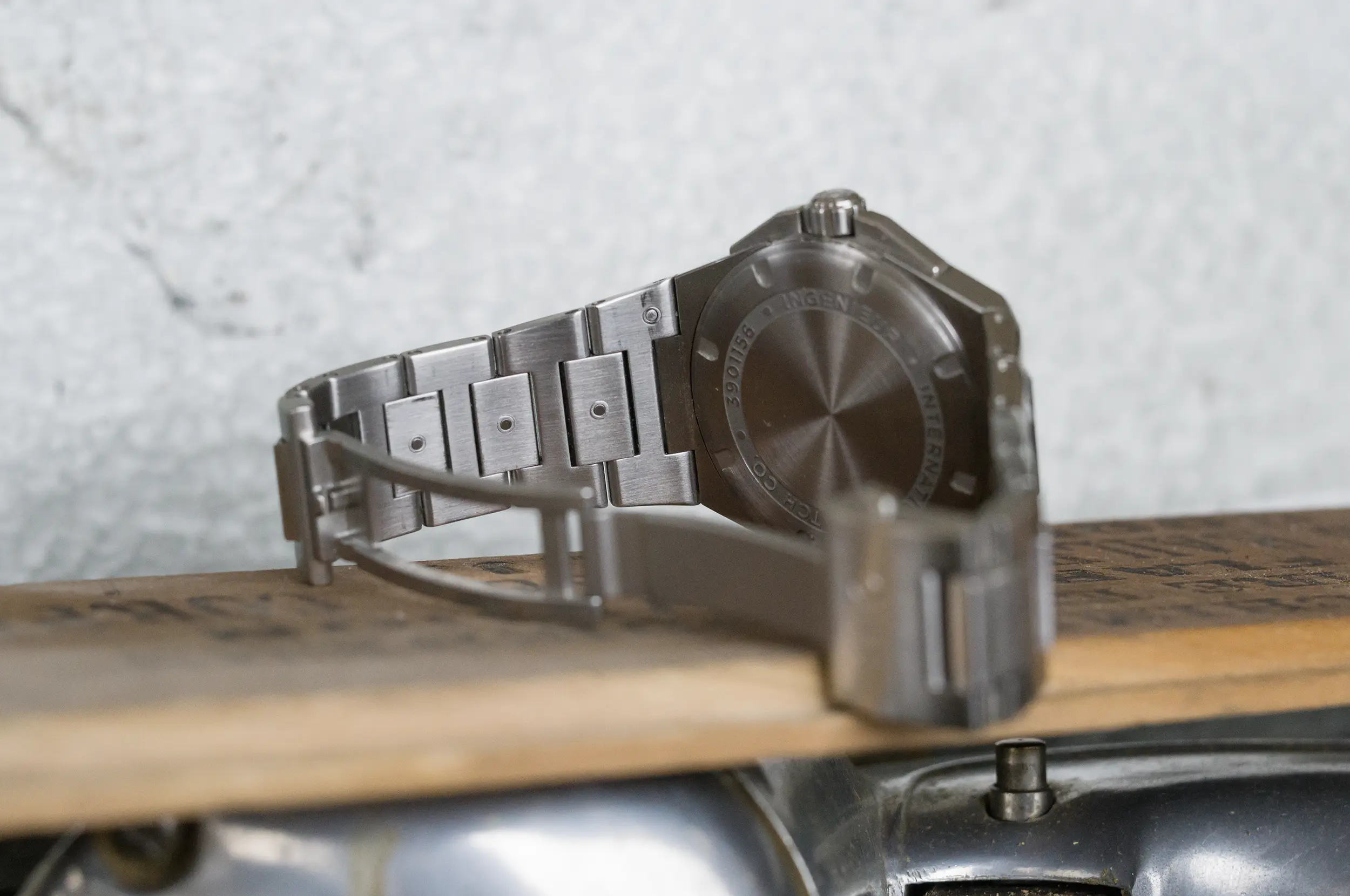
As interesting as the case and bracelet are, the dial brings another dimension to the Ingenieur, and it always has. Where the new references get a deep interwoven texture, the 3239 makes due with a flat, sector dial design. Applied hour markers are fully polished, as are the hands, making legibility a challenge in certain light conditions. Were these elements rendered in black we’d be looking at an entirely different situation. A raised rehaut hosts the minute index, which is printed in black, joining the IWC branding and slick Ingenieur mark at 6 o’clock. Finally, a date aperture at 3 o’clock makes way for a dial matched date disk. It’s a relatively sterile experience, but suits the no frills nature of the rest of the watch perfectly.
Framing the dial is one of those now iconic Gerald Genta design cues, a porthole bezel with 5 recesses around the perimeter. This feature was on the first SL Inge, and it appears on the most recent references as well. It’s not something that jumps out at you, but its weight on the design as a whole is undeniable. It’s less of an identifying feature than the same bit of the Royal Oak, which Genta designed 4 years prior to the SL Ingenieur, but it creates the same vibe in a different way.
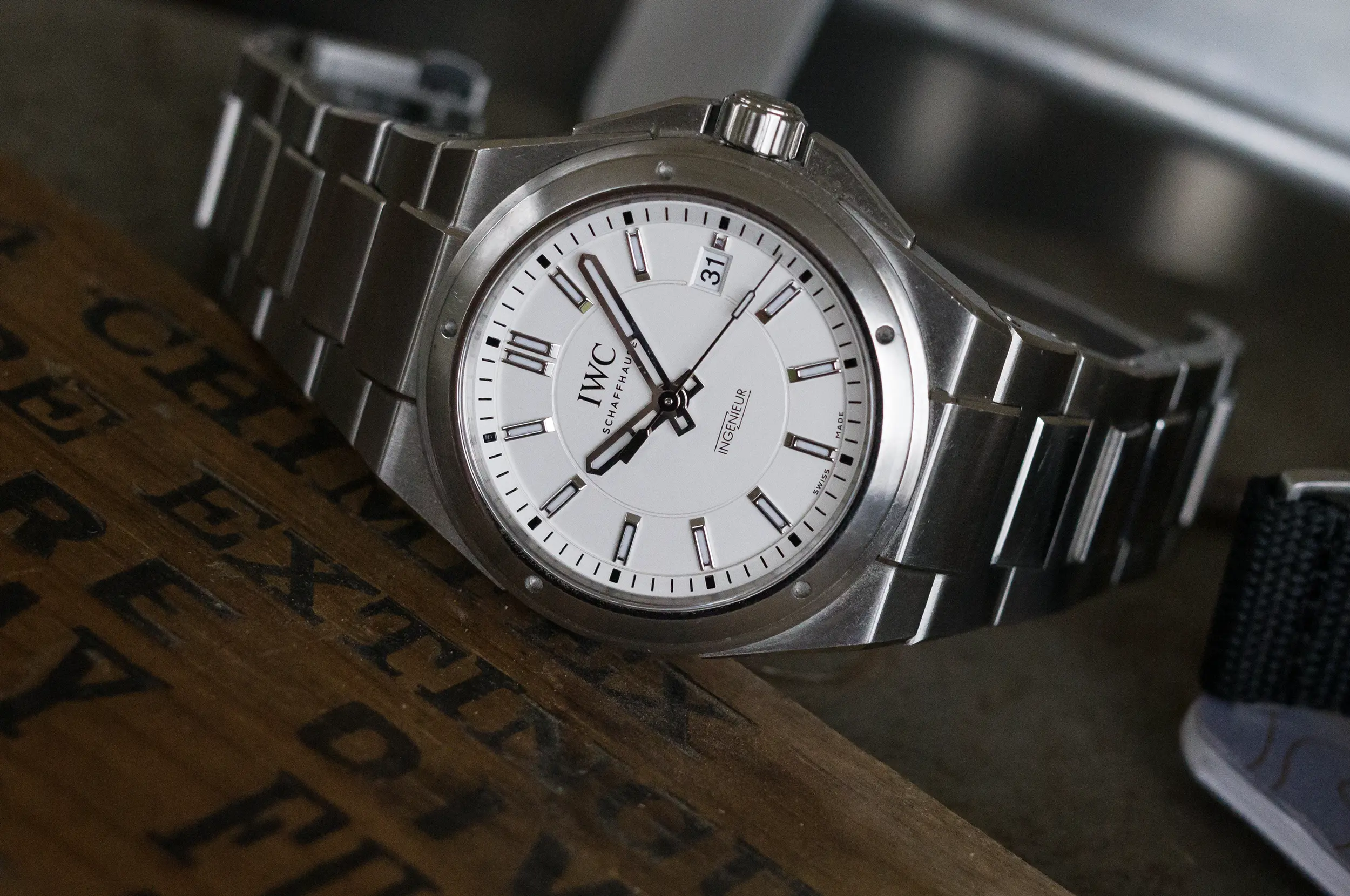
On that note, the Ingenieur falls into the same vein as the Royal Oak and Nautilus as an integrated bracelet sport watch design from Gerald Genta. While the other two have held to their roots with consistency over the generations, the Ingenieur has taken a different approach. The scattered approach that IWC has taken has no doubt diluted the concept compared to the Royal Oak and Nautilus, but it’s also meant that we’ve seen more risks taken with the Inge, delivering a broad variety of interpretations. This has kept the Inge far more accessible than the Royal Oak or Nautilus, but with all the panache of its contemporaries.
The 3239 may be the most approachable of all the Ingenieur iterations, all while perfectly encapsulating the tool-watch era from IWC. This is a watch that can be had for around $5k, or less than half of the price of the newest references. It’s also imminently wearable, and rough enough around the edges that you’ll never feel forced to put it to use, but not so rough that it can’t be dressed up a bit when needed. It represents the end of an era from the brand, and may be their link to finding new footing as a sport watch brand that has legs beyond their range of Pilot watches.
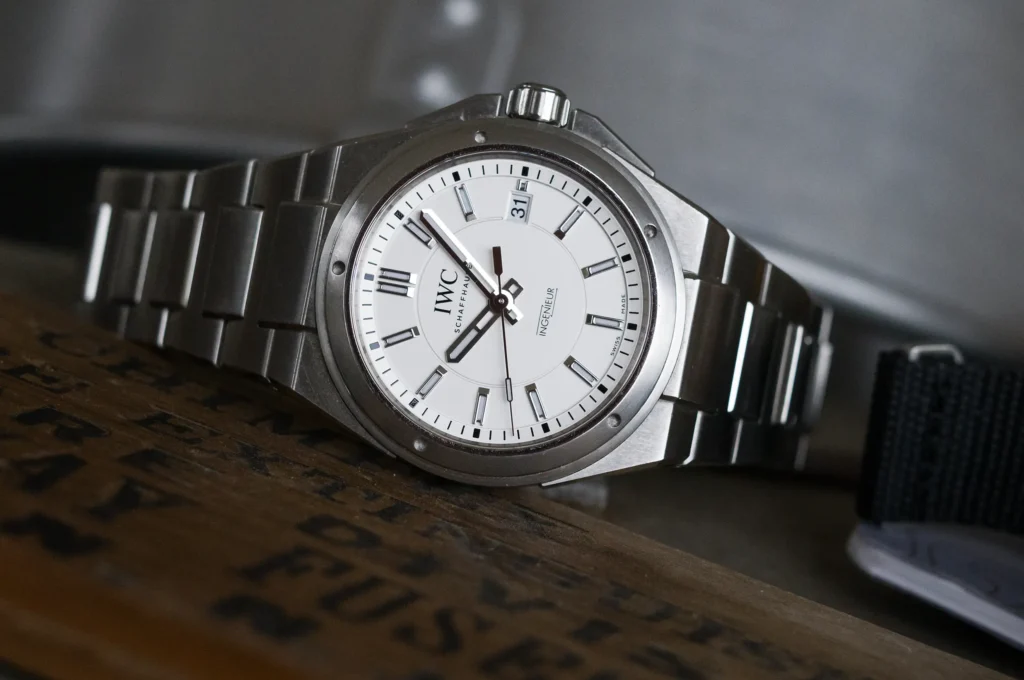

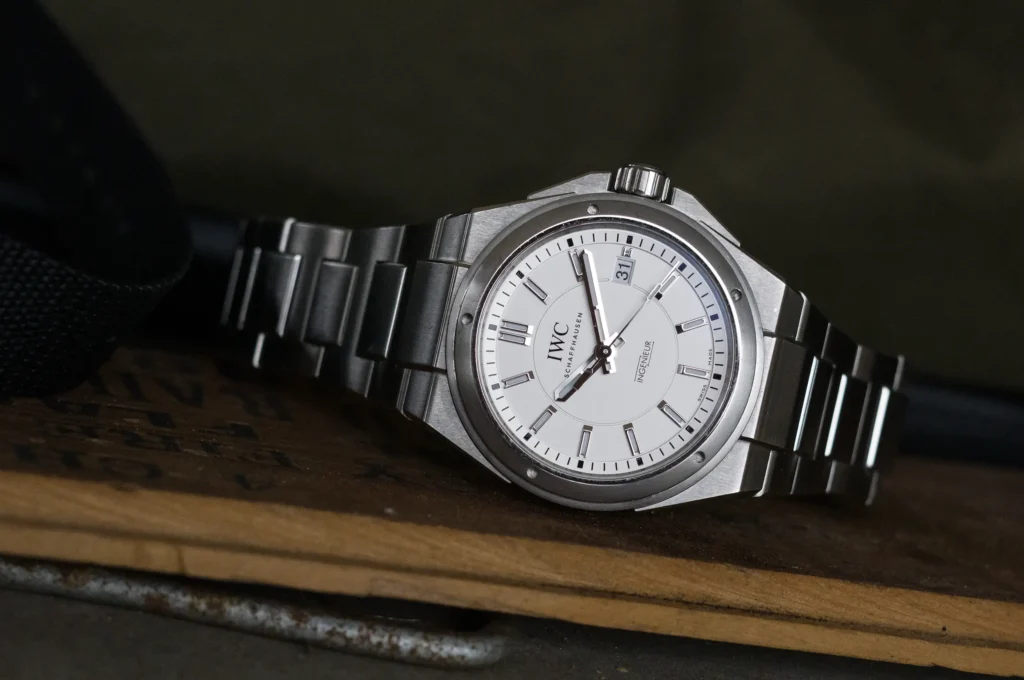
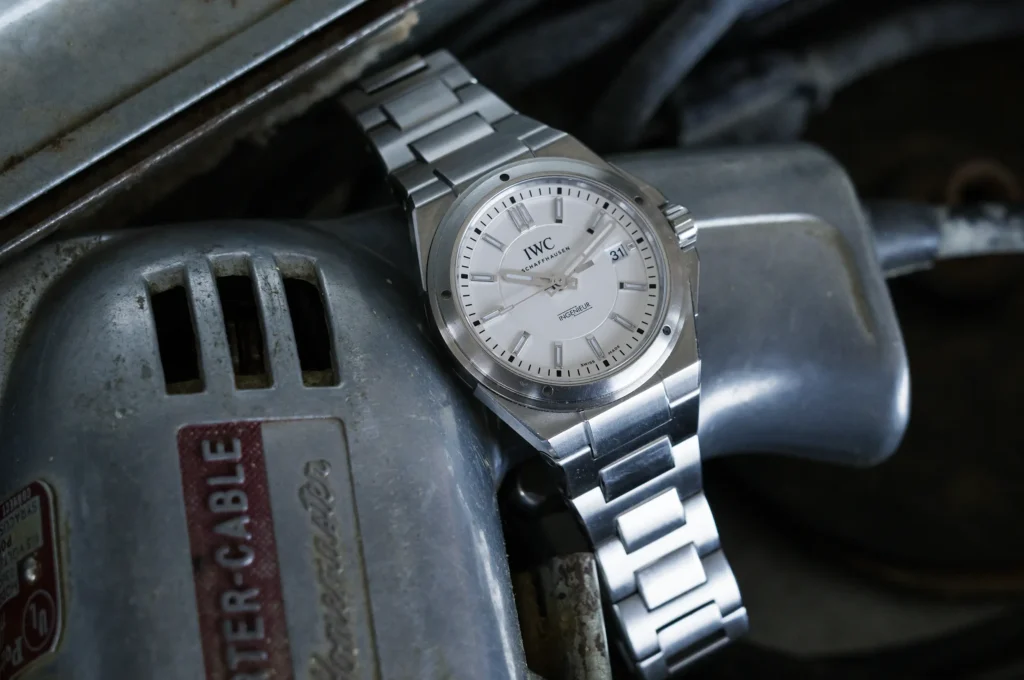
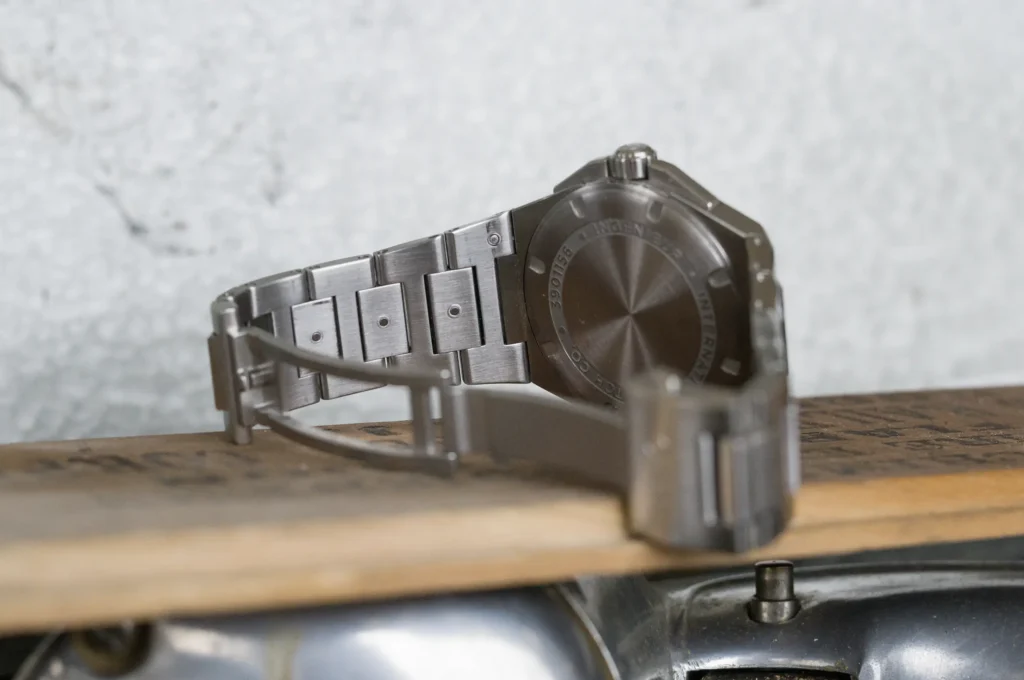
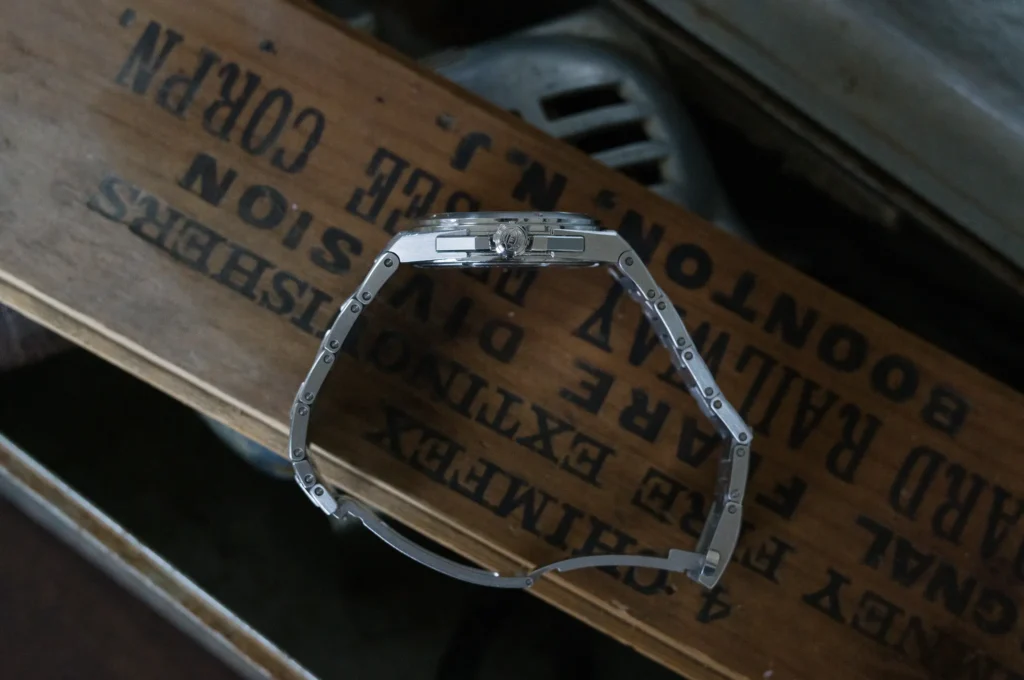
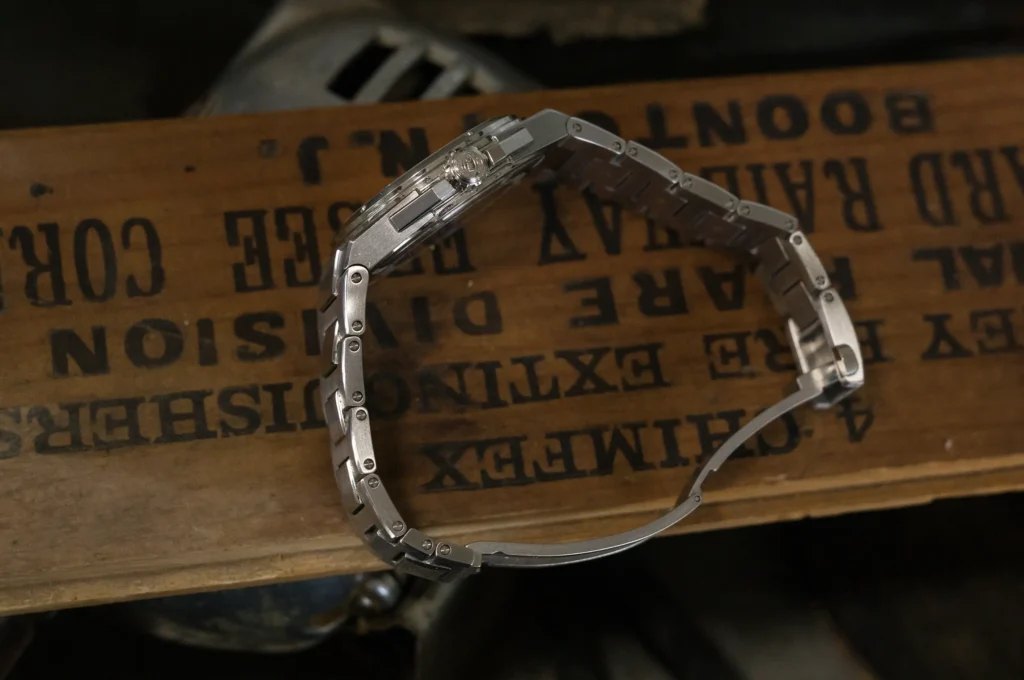
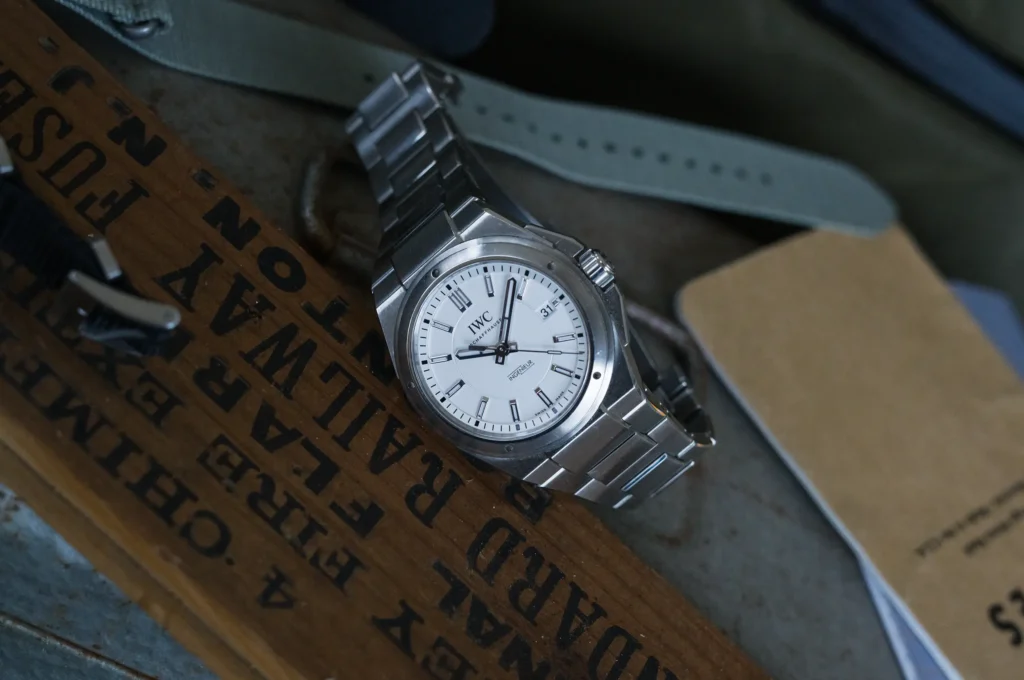
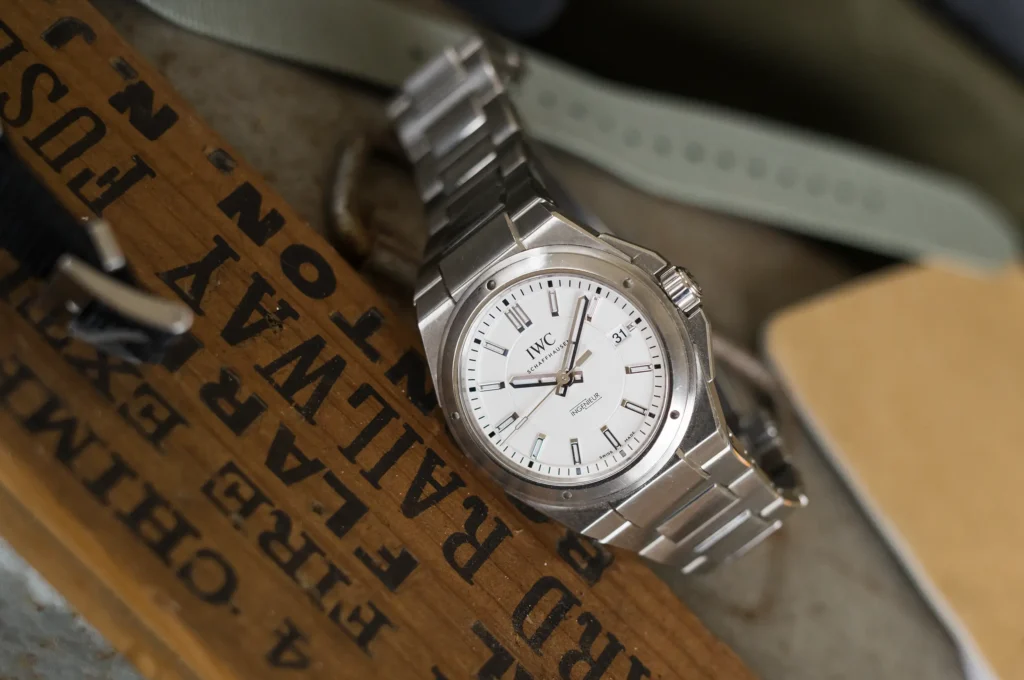
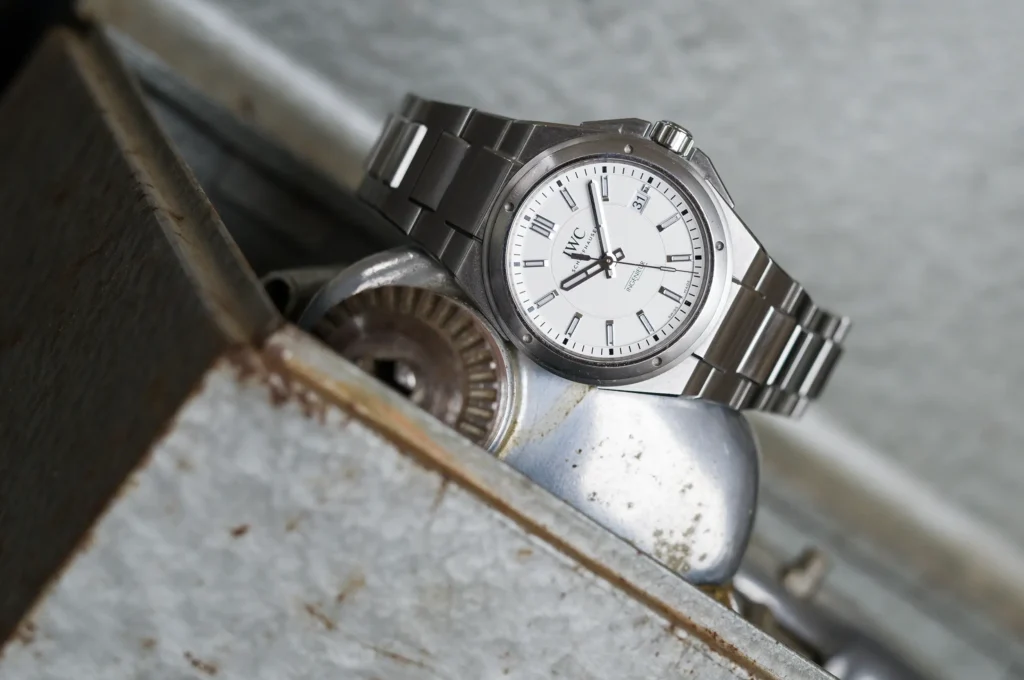
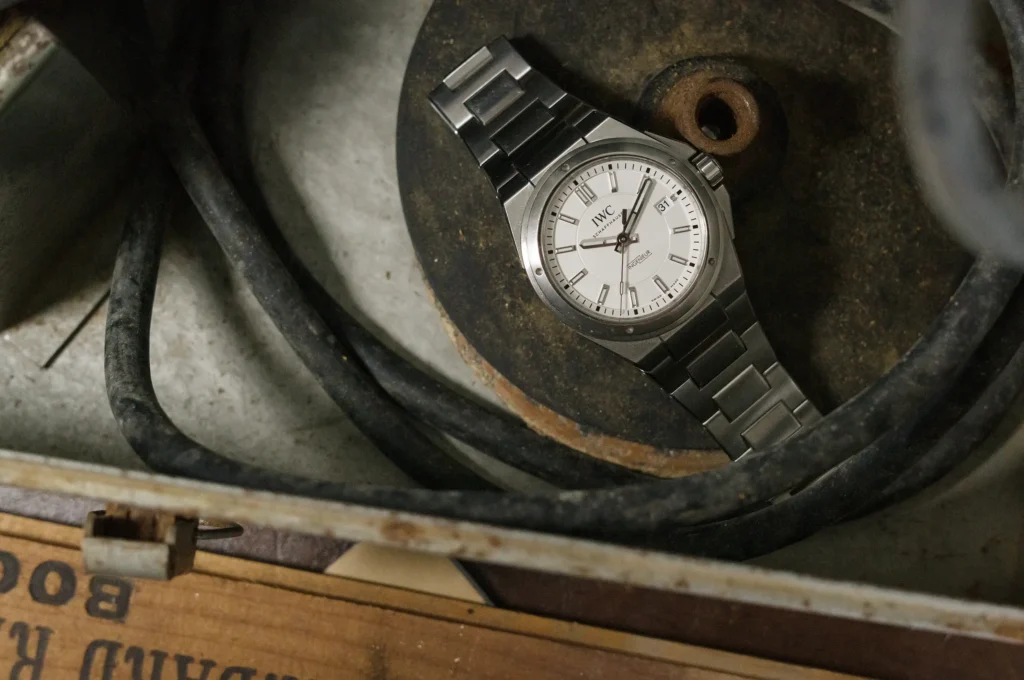
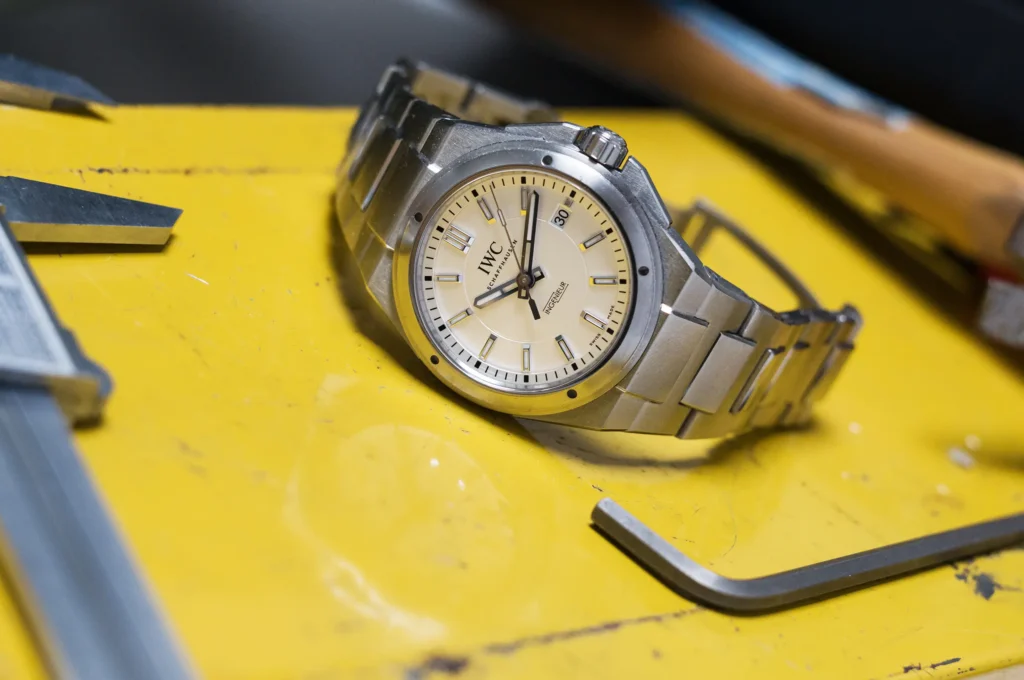


Comments
2 responses to “The IWC Ingenieur 3239 Retrospective”
[…] years. Our in-depth review of the new Ingenieur is coming soon, but in the meantime don’t miss this retrospective of the 3239 reference released in 2013 for some […]
[…] IWC Ingenieur 3239 Retrospective […]